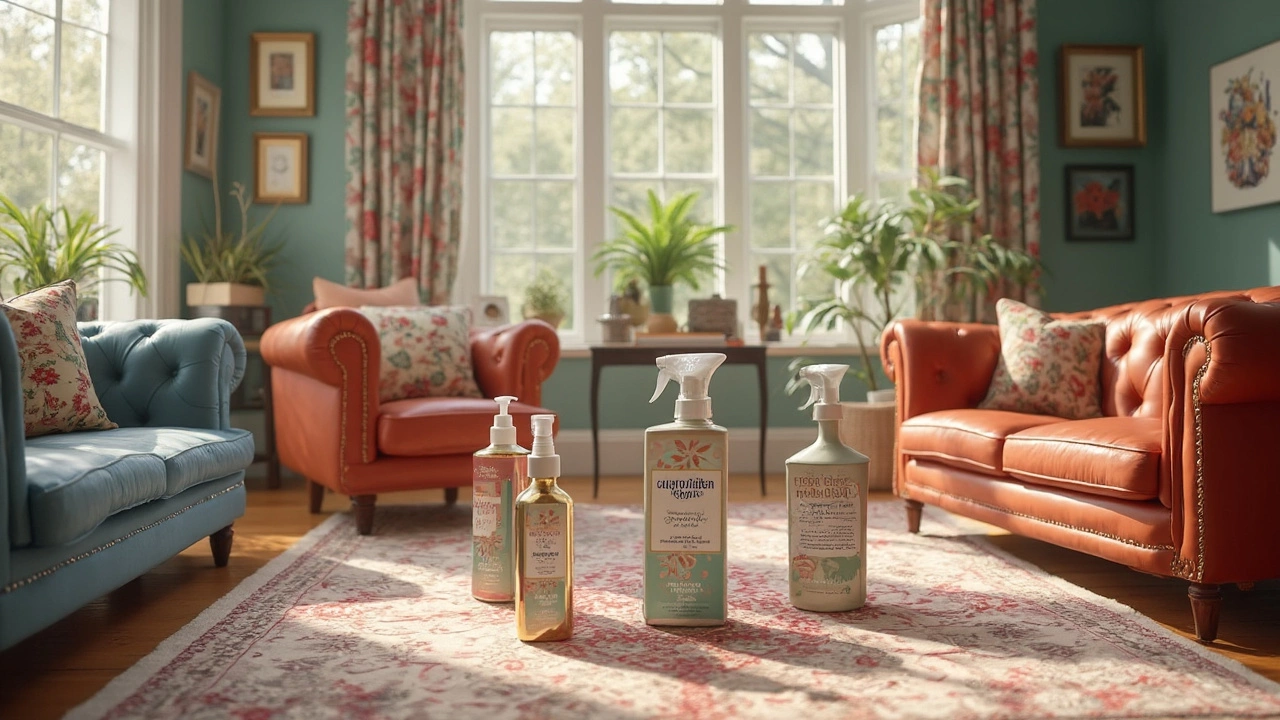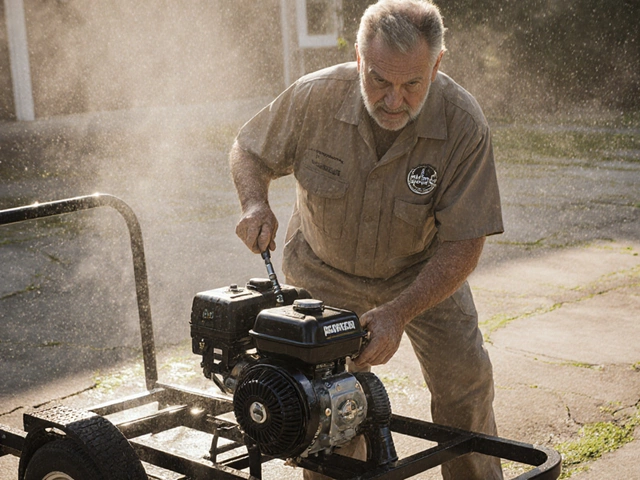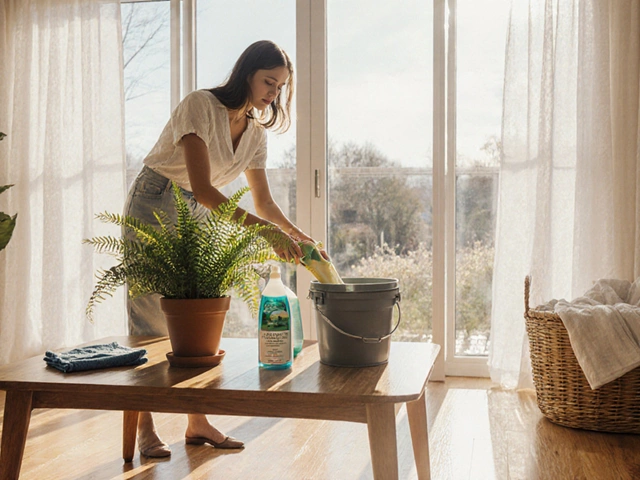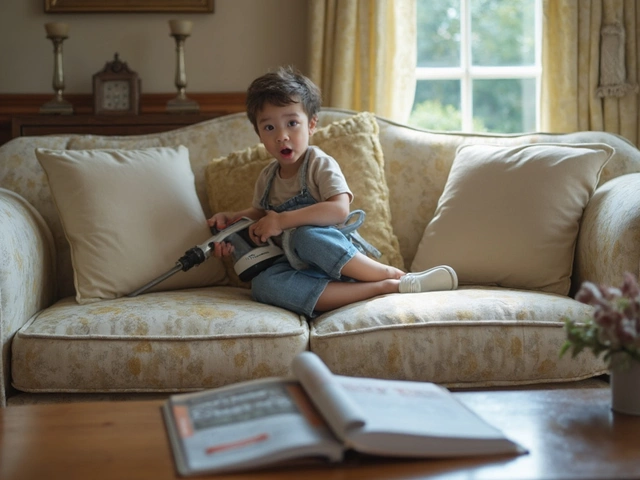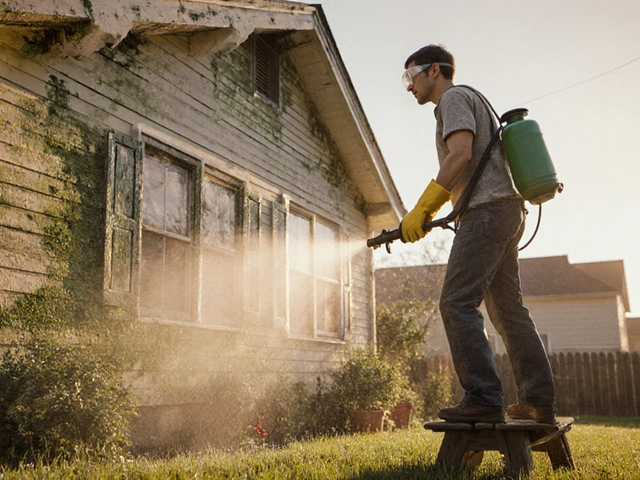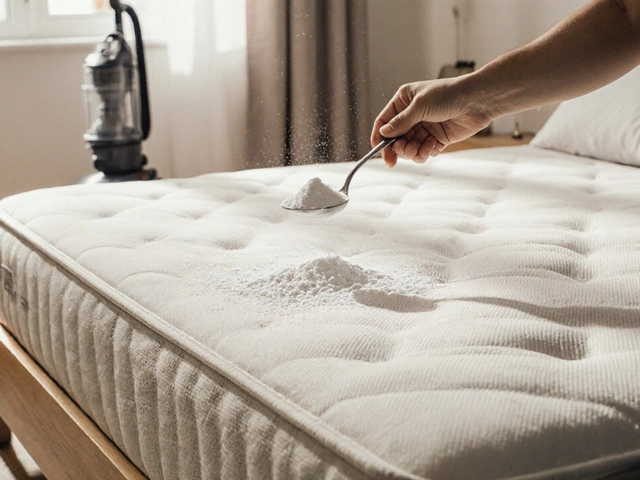Ever spilled something on your couch and thought, 'How am I ever going to get that out?' We've all been there. Before you start researching new couches online, let’s talk about upholstery cleaners. Do they really tackle those pesky stains and grimy spots?
Upholstery cleaners are like magical potions for your furniture. They’re not just about scrubbing away dirt. These cleaners use a mix of cleaning agents that break down stains at a molecular level. But let's not get too science-y here. The real question is—do they actually work? Or are they just hype?
Different cleaners work in different ways. Some are designed for quick spot cleaning, while others are powerhouses meant for those deep-clean affairs. Knowing which one to grab can make all the difference between a quick fix and a disaster. We'll explore these, so your couch isn't just clean; it's 'I-just-got-it-yesterday' clean!
- The Science Behind Upholstery Cleaners
- Types of Upholstery Cleaners
- When to Use Professional Services
- Smart Tips for Using Upholstery Cleaners
- Making the Right Choice for Your Home
The Science Behind Upholstery Cleaners
Alright, let's get into the nitty-gritty of how these upholstery cleaners work their magic. First off, they're not just soap and water. The secret sauce here is the combination of surfactants, solvents, and enzymes.
Surfactants are like tiny soldiers. They break the bond between the stain and the fabric. When you spray a cleaner, surfactants get to work, surrounding dirt particles and lifting them off the surface. Meanwhile, solvents dissolve oil and grease, making blotting them away a breeze. If your ketchup dreams of becoming one with your sofa, enzymes are like the bouncers keeping it out. They break down complex proteins into smaller, more manageable bits.
But here’s the kicker— not every cleaner works on every material. Some fabrics are delicate like silk and need milder solutions, while others are tough, like polyester, and can handle stronger formulas. Knowing your fabric’s tolerance is key to choosing the right product.
Now, here’s a fun fact—heat can boost a cleaner’s efficiency. Warm water helps speed up chemical reactions, making cleaners work faster. That’s why you’ll often see those steam cleaners getting praise—nothing like a bit of heat to knock out stubborn grime.
| Type of Cleaner | Best For |
|---|---|
| Enzyme-based | Protein stains like blood or sweat |
| Surfactant-based | General dirt and grime |
| Solvent-based | Oily or greasy stains |
Understanding this chemistry helps you pick the right upholstery cleaning product, so you tackle stains more effectively. Hey, it might even make you the go-to cleaning expert among friends!
Types of Upholstery Cleaners
When it comes to upholstery cleaning, not all products are created equal. There are different types tailored for various materials and stains. Understanding these can save you both time and money. So, let's break it down.
Foam Cleaners are great for more delicate fabrics. They work by sitting on the surface of your upholstery and then lifting out the dirt as you wipe away the foam. This minimizes the risk of soaking your couch, which is especially important for materials that don't like getting too wet, like velvet or silk.
Liquid Cleaners are your go-to for tougher, more ground-in stains. They penetrate deeper into the fabric, making them ideal for materials like cotton or polyester. Just be careful not to overuse them on fabrics that can be sensitive to too much moisture.
Then there’re Dry Cleaners. Yeah, not the kind you drop your clothes off at. These are usually powders or sprays that you sprinkle on, leave for a while, and then vacuum off. They're super handy when you can't risk wetting the furniture, like in a movie theater or office chair.
Finally, Enzymatic Cleaners are the specialists for biological stains—think pet accidents or food spills. They contain enzymes that break down organic material, which is what makes them super effective for such messes.
- Foam Cleaners: Best for delicate fabrics.
- Liquid Cleaners: Ideal for tougher stains and durable fabrics.
- Dry Cleaners: Perfect for moisture-sensitive areas.
- Enzymatic Cleaners: Specialized for organic stains.
Before diving into upholstery cleaning, it's crucial to know what you're dealing with. Checking your furniture's care label can give you clues about which cleaner to use. A little bit of homework can mean the difference between a spotless cleanup and a furniture disaster!
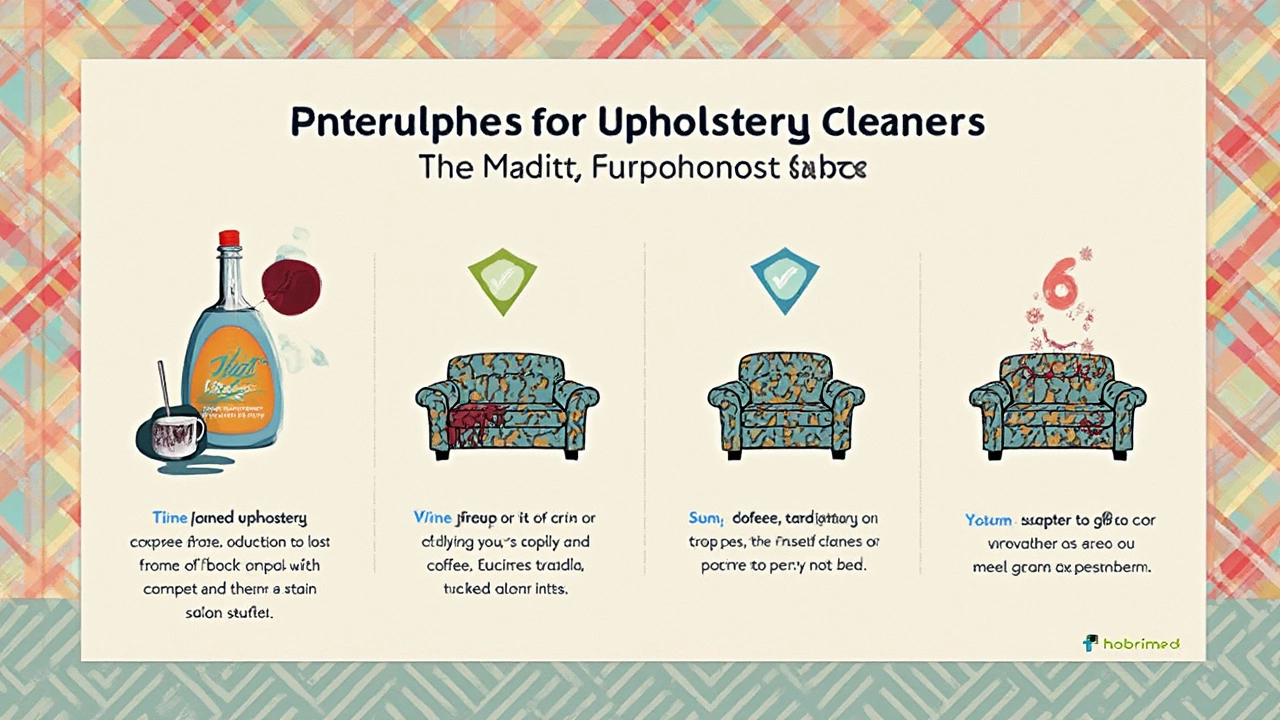
When to Use Professional Services
So, when is it time to dial up the pros instead of tackling upholstery cleaning yourself? Well, there are a few situations where it might actually save you time, frustration, and, ultimately, your upholstery.
If your furniture is marked by stubborn stains—like red wine or ink—that haven't budged despite your best efforts, professionals have advanced tools and products designed specifically for tough cases. Not only can they tackle stains, but they also understand fabric types and cleaning techniques better than any DIY guide.
As Emily Thornton of Clean Experts tells us,
"Professionals are trained to identify fabrics and the most effective solutions without damaging the material. It's not about just tossing chemicals on stains; it’s about using the right methods tailored to each piece."That's valuable insight, especially when dealing with pricey or delicate pieces.
Apart from stains, if your upholstery hasn't seen a deep clean in years, it's likely hiding dust mites, allergens, and who-knows-what-else deep inside. Professionals have the equipment to deal with these hidden troubles, making your home a bit healthier.
And let's talk about size—if you have an entire living room set that needs to be freshened up, hiring experts can be less exhausting and more efficient. They turn an all-day task into a quick job with their high-grade equipment.
Lastly, big events or special occasions might be the cue to call in the experts. Whether it's a holiday gathering or a significant celebration, having squeaky-clean furniture not only wows your guests but also lifts your space.
| DIY Cleaning | Professional Cleaning |
|---|---|
| Able to handle minor stains | Equipped for stubborn stains |
| May require multiple tries | Typically one thorough session |
| Limited to household products | Uses industrial-strength solutions |
In summary, while upholstery cleaners can work wonders, knowing when to call in the pros can keep your furniture in top shape without the headache.
Smart Tips for Using Upholstery Cleaners
So, you’ve got your upholstery cleaners in hand and you’re ready to tackle those stains. But how do you make sure you're using them like a pro and not causing more harm than good?
First things first, always test in an inconspicuous spot. Treating a small, hidden area of your couch will save you the heartache of a visible mishap. Trust me, you don’t want a funny discolored patch in the middle of your favorite chair.
If you're dealing with a fresh stain, blot it gently with a clean cloth to absorb as much as possible. Rubbing or scrubbing might just push the stain deeper into the fabric, and nobody wants that headache.
Always read the instructions on your cleaner. I know, instructions can be a bore, but every product has its quirks. For example, some are best applied and left to sit for a while before rinsing, while others require immediate action.
Check out this quick guide:
- For water-based stains like coffee or juice, use a water-based cleaner. Makes sense, right?
- Oil-based stains, such as those from food, may need a solvent-based cleaner.
- For mystery stains that you can’t quite place, some multipurpose cleaners can be real life savers.
When using an upholstery cleaning machine, make sure you don't soak the fabric. Too much moisture can lead to mold, and I don’t even need to explain why that's bad news.
If you’re someone who loves a good stat, here’s a helpful tidbit:
| Type of Stain | Best Cleaner Type | Success Rate |
|---|---|---|
| Water-Based | Water-Based Cleaner | 80% |
| Oil-Based | Solvent-Based Cleaner | 70% |
| Multi-Type | Multipurpose Cleaner | 75% |
Want one more tip? Purely for safety, ensure your room is well-ventilated during the cleaning process. Some cleaner fumes aren't exactly the best kind to breathe in.
Using the right techniques with upholstery cleaners can leave your furniture looking—and smelling—refreshingly new. Go ahead and give it a try!

Making the Right Choice for Your Home
Choosing the right upholstery cleaners can feel like picking the perfect pizza topping—there are just so many options! So how do you know what’s right for your specific needs? Here are some points to consider.
First, think about the fabric. Is it leather, suede, or something synthetic? Some cleaners are specially formulated for certain materials. For example, leather requires conditioners that keep it from drying out, while synthetic fabrics might need something with stronger stain-fighting chemicals.
Next, let’s talk about the types of stains you commonly deal with. Grease, wine, pet messes—each needs a different approach. Some cleaners are all-purpose, but if you find yourself battling the same type of stain regularly, consider a cleaner specifically designed for that issue.
- Spot Cleaners: Great for new or small stains. They quickly address spills as they happen.
- Foam Cleaners: Best for larger surface areas without soaking your upholstery.
- Steam Cleaners: Fantastic for deep cleaning sessions that can handle stubborn grime.
Don't forget about allergies and sensitivities. Some cleaners contain harsh chemicals that can be irritating. If that's a concern, look for products labeled as ‘eco-friendly’ or ‘non-toxic.’
Price can be a factor too. Just because a cleaner is more expensive doesn’t automatically mean it’s better. Check reviews, and maybe buy a small bottle to test out on an inconspicuous spot before going all-in.
Also, a quick tip—follow the instructions! Skimming over the usage directions can lead to botched cleanups or damaged fabric. Take the time to read what the manufacturer suggests for the best results.
Being armed with the right cleaner is like having a secret weapon for home cleanliness. It takes a little sleuthing, but once you find the perfect match for your furniture, those stains and dirt don’t stand a chance!
